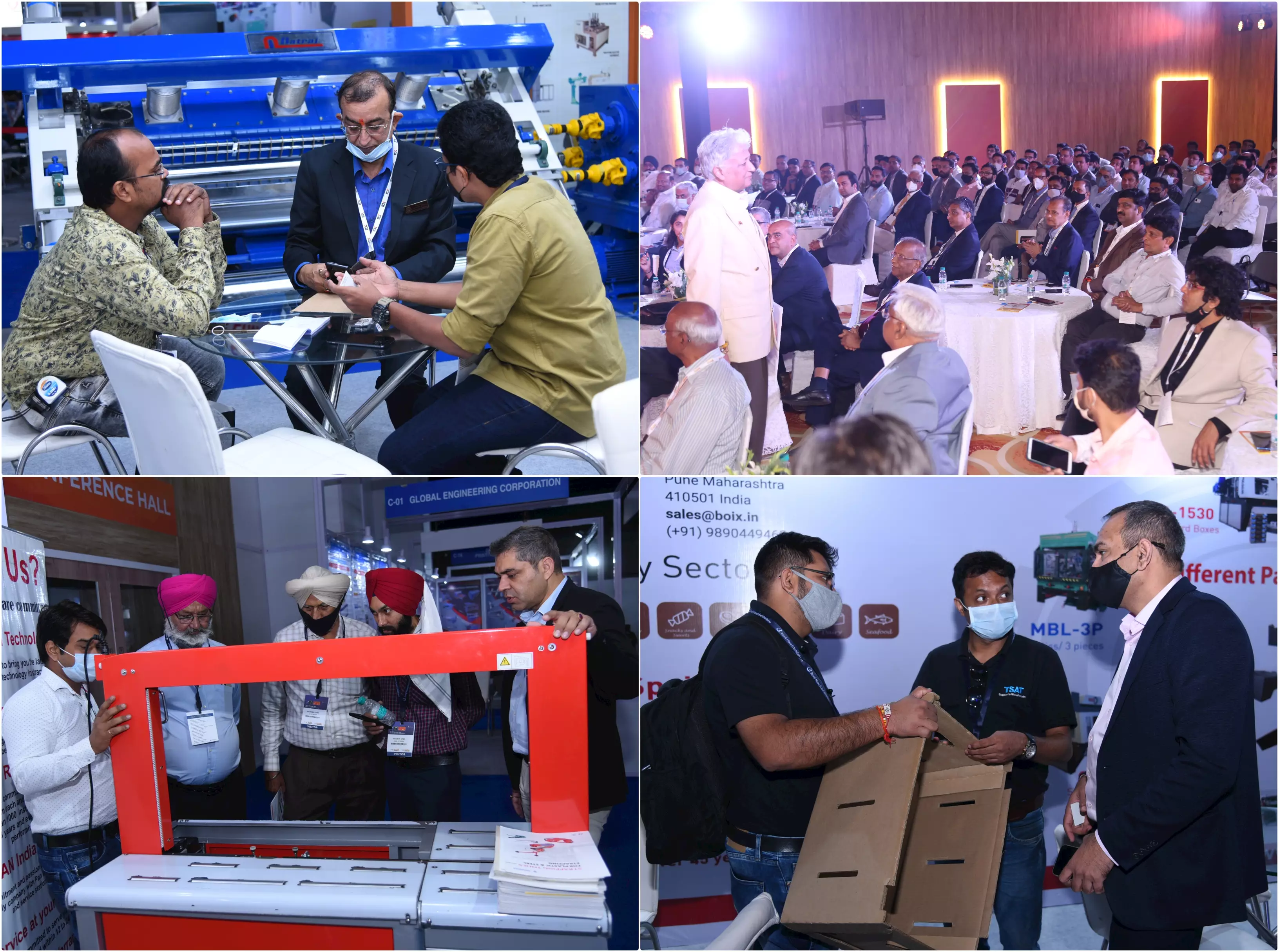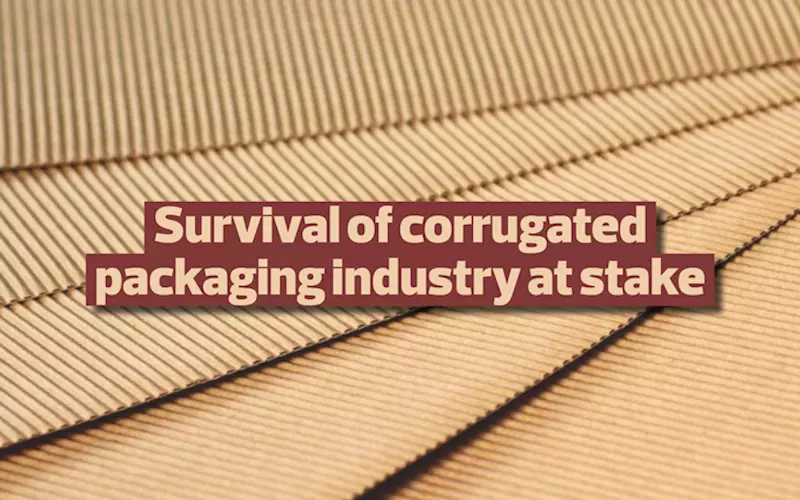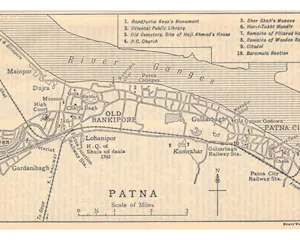Survival of corrugated packaging industry at stake
Rising raw material prices, supply chain disruptions, energy crisis, and seven-fold increase in container freight charges are to blame. Aultrin Vijay of WhatPackaging? reports
01 Dec 2021 | By PrintWeek Team
Rising input costs and disruptions in the supply chain are negatively impacting the corrugated packaging industry, putting a dent in its revenues. Energy crisis, economic tensions, increasing freight and fuel rates, and GST levied on corrugated boxes is only hurting the already reeling corrugated packaging industry.
According to reports, costs have increased by an additional 30% over the past three months. The rise comes atop at least a 70% rise in the corrugated case manufacturers' raw material costs between January 2020 and March this year.
Apart from that, paper mills have been increasing prices every week, where the box manufacturers have to wait for the customers to agree and approve the rate hike.
Soaring kraft paper prices
To begin with, prices of kraft paper – a principal raw material – have started skyrocketing. Corrugated boxes, which play a vital role in the domestic supply chain and exports, are made from kraft paper, made from wastepaper and cuttings besides recycled brown boxes.
According to the Federation of Corrugated Box Manufacturers of India (FCBM), there has been a sharp price increase of Rs 5,000 per tonne of kraft paper within 10 days. However, the mills say that this is not the end and expect further increase in the coming days.
There has been an almost seven-fold increase in global container freight charges and is only adding fuel to the raging spike in imported waste paper prices.
“The current crisis for the Indian corrugated box industry is due to the 70% hike in the cost of kraft paper,” Kirit Modi, president emeritus of the Indian Corrugated Case Manufacturers' Association (ICCMA) told WhatPackaging? during an interaction in March 2021.
“What you must understand is, we are converters. And as converters, we need to be reimbursed raw materials price hikes for our survival. There is definitely a huge challenge for the industry in terms of pressure on costs, profitability and additional working capital funds. Our industry is requesting brand owners and corporate clients for their support. We are requesting them to understand our problems,” he said.
He also said that “we are currently facing two back-to-back Black Swan events”. First, it was the Covid catastrophe, which was followed by the shock of kraft paper price hikes.
The corrugated box industry has urged the government to ban the exports of recycled kraft paper pulp rolls that will help in the availability of raw materials in the country and control the surge in prices.
ICCMA panel: There has been a sharp price increase of kraft paper within 10 days
China is said to be one of the main reasons for the surge in paper prices as it began importing huge volumes of kraft paper to meet its domestic demand. It began to import kraft paper since the country banned importing all wastes, mainly paper, from January this year.
Sandeep Wadhwa, president of ICCMA says, "The exports of kraft paper from India to China have surged as China has banned import on waste paper from 1 January 2021. Exports from India are in the form of recycled kraft paper pulp rolls.''
"This has created a huge shortage of raw material for the domestic corrugated industry," Wadhwa adds.
Wadhwa strongly believes that there is a need for the government to step in and ban exports of recycled kraft paper pulp rolls to rescue the domestic corrugated industry from the verge of closure and save over six lakh people employed in the industry.
Harish Madan - vice president of ICCMA states in a press release: "The demand gap and attractive pricing in China is diverting the output of Indian kraft paper from the domestic market and driving up the domestic prices of finished paper and recycled fibre.
“Exports of recycled kraft paper pulp rolls by Indian kraft paper mills would touch about two million tonnes this year, roughly 30% of total domestic kraft paper production in India."
In addition to the increase in the costs of kraft paper, he says other conversion costs such as labour costs, starch and freight have also witnessed a huge increase by 60-70% over the past few years.
According to Madan, China's burgeoning demand for Kraft pulp rolls is pushing at least 20% of Indian box makers on the brink of closure. The corrugated box industry in India has over 350 automatic corrugators and more than 10,000 semi-automatic units, mostly in the MSME sector.
"We, therefore, appeal to all box users, including large brand owners and other corporates, to grant fair price revisions to cover the increase in raw material and conversion costs and ensure the industry avoids imminent closure," he adds.
Energy trouble
Adding to the industry’s woes, prices of coal, which is one of the main sources of energy for paper mills, has increased from Rs 5,000 per tonne to Rs 15,000 per tonne. This has increased the cost of production of paper mills by about Rs 3,500-4,000 per tonne, FCBM stated in a release.
Sanjay Rajgarhia, president-elect, ICCMA, says, “We need at least one tonne of coal to manufacture one tonne of paper for mills that have co-generation plants.”
The situation is so grim that the shortage of coal has created a scenario where mills that used to buy coal on 90 days of credit now need to pay in advance for it and along with higher local waste paper prices, which has completely disrupted their cash flows.
In turn, mills have cut all credit terms to corrugators creating a domino effect, according to a report in The Economic Times. With the increased cost of coal, starch, freight, labour, and other spares and consumables, the conversion cost of the corrugators has increased by Rs 1,500-2,000 per tonne.
Globally, coal prices have increased by nearly 190%, while steel prices have gained 32% since the beginning of this year. The price of starch, too, has increased by about Rs 4,000 per tonne in the last 30 days. Starch is used for adhesive purposes, while steel pins and wires are used to manufacture brown boxes.

Snapshots from ICCMA 2021
GST double whammy
Higher levy under the Goods and Service Tax (GST) is yet another pain point for the industry. The Centre’s recent move to increase the GST levied on corrugated boxes from 12% to 18% has irreversibly halted the gradual switchover from plastic to paper in several sectors.
FCBM urged governments to incentivise the adoption of eco-friendly packaging and replacement of plastic by lowering the GST for these sectors, thereby providing an incentive for shifting mindsets towards paper-based packaging.
“The resultant impact on working capital requirements for our members predominantly in the MSME sector has been crippling. The additional 6%, as well as rising RM cost, are crippling the day-to-day working of corrugators. We request the government to take immediate steps to, if not reduce GST on corrugated packaging for these sectors at least roll back the increase affected earlier this month,” the FCBM release states.
Industry experts believe this volatility is here to stay, it adds. FCBM has therefore appealed to all stakeholders including the government to take necessary steps to help this industry out of this crisis and enable its survival.
According to Manish Patel, managing director, South India Paper Mills, which also operates a printing and packaging division, the frequent and staggered lockdowns in various states have kept demand flat in each major region as demand in one state is fed by demand production in several by rotation.
“After the lockdown in March 2020, there was a sharp revival in demand during the tail end of June 2020, but it was accompanied by a sharp increase in raw material cost for paper mills that mapped a global increase in prices of waste paper. The mills had no option but to pass on these increases,” he says.
“All in all, prices are up, and working capital outlays have been significantly higher, but returns are under tremendous pressure and have significantly declined in 2021 thus far,” Patel concludes.















 See All
See All